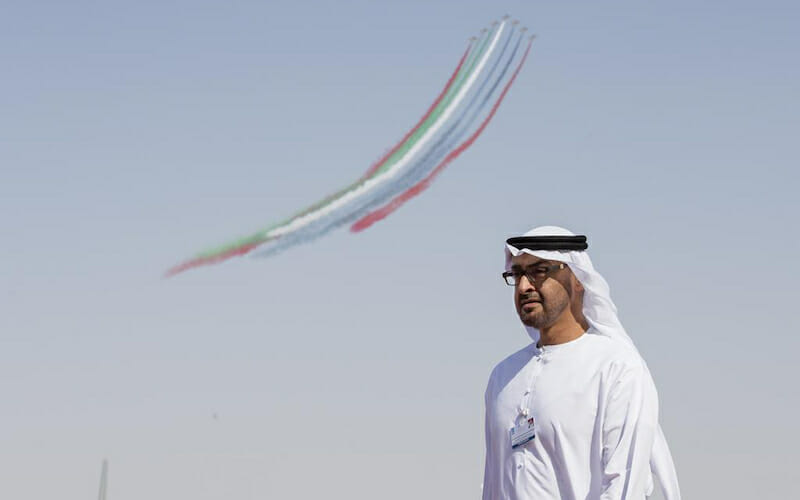
UAE to Trump: Sell Us some F-35 Fighter Jets
The US government knows the value of its Gulf allies, the Kingdom of Saudi Arabia and the United Arab Emirates. Besides the oil trade, the military expenditures by the oil-rich Middle East nations have strengthened the US economy.
The Emirates host US Air Force’s 380th Air Expeditionary Wing and the Trump administration recognizes the vital importance of the UAE coordinating American attempts to restrict their common enemy, Iran.
The Trump administration expanded the 15-year US-UAE Defense Co-operation Agreement with the Emirates that was signed in May 2017. At the same time, the Crown Prince of Abu Dhabi and Deputy Supreme Commander Mohammed bin Zayed Al Nahyan raised the subject of the fifth-generation fighter F-35A during meetings with President Trump and US Defense Secretary Jim Mattis in Washington DC.
Stephen Wilson, the USAF’s vice chief of staff affirmed at the Dubai Air Show in 2017 that the UAE is seeking two dozen F-35 aircrafts from the US but did not provide any detailed information.
This worried Israel, and Saudi Arabia’s plans to have the aircrafts along with the UAE.
The UAE Ambassador to the US, Yousef Al Otaiba, shared this following the Dubai Airshow in 2017, and US companies closed the megadeal of $44 billion for commercial aircraft and defense-related equipment and services.
Jeff Kohler, Boeing vice-president of military business development, has confirmed that the Trump administration has agreed to the UAE’s official request for classified briefings on the F-15 and the F/A-18.
Fighter aircrafts, F/A-18E/F and the F-15 Silent Eagle, are quite similar to F35 technologically and are also being considered. Kohler claims that the UAE wants more advanced and new age fighters in its military arsenal.
A coalition including Saudi Arabia, the United States, the United Kingdom and the United Arab Emirates, with minor support from several other Middle Eastern nations, has bombed Yemen since March 2015, targeting the Iran supported Houthi insurgency.
Both countries, Saudi Arabia and the UAE, have ignored the catastrophe that the war has created in civilian areas. In June this year, the UN launched an urgent diplomatic effort to mitigate an expected UAE assault on Yemen’s important port city, Hodeidah, fearing the attack could create a humanitarian disaster.
The UAE has been using fighter jets from the US in the Yemen war. In October 2017, the UAE Ministry of Defense announced that an Emirati fighter jet F16 crashed in a mountainous area near the southern city of Aden after experiencing technical difficulties.
The UN has criticized both the coalition campaign and the Houthis over the scale of civilian casualties.
The $251 million expenditure for the F-35A which the Emirates wishes to acquire is designed to be nearly invisible to enemy radar and can be used as a tool for powerful intelligence gathering. But observing the past pattern in the Yemen war, it would be no surprise if the UAE used the F35 to launch more airborne attacks in Yemen.
In February 2017, the UAE and Russia signed a letter of intent to jointly develop a fifth-generation fighter based on the MiG-29.T. The US State Department memo revealed that the UAE covertly purchased $100 million worth of weapons from America’s rival North Korea in June 2015 to support the Saudi-led military intervention in Yemen.
This shows a peculiar desperation on the part of Emirates to procure a variety of top notch weapon systems.
Back in 1999, the UAE even contracted for 200 Pakistani air force fighter pilots to fly the F-16D it ordered from Lockheed Martin which caused the US Government to block the release of sensitive technology to the UAE at that time.
Al Nahyan’s attempts to purchase the F-35 have been unsuccessful since 2011. However, the UAE air force has announced plans to acquire a “next-generation fighter” in the 2018-2025 timeframe.
Presently, only some US allies, the United Kingdom, Italy, Australia, Canada, Norway, Denmark, the Netherlands, and Turkey are part of the active development program on F35.
The UAE is among the world’s biggest defense spenders, and has long been one of the largest customers for the US Foreign Military Sales programme.
In January, 2018 there was a public outcry in Finland, when people saw that the UAE was using Finnish-made Patria armoured vehicles in combat operations in Yemen. Following this, Norway soon suspended the exports of military goods to the UAE as a response to their misuse in Yemen.
United Nations has described the situation in Yemen as the worst humanitarian crisis. But the oil rich US allies want to include more top grade air fighter jets in their air forces and are ready to sign defense contracts worth billions of dollars. The fighter jet deals and the American-Gulf defense agreements make it clear that the US has no intention to get out of the profitable trade for its weapon systems.

